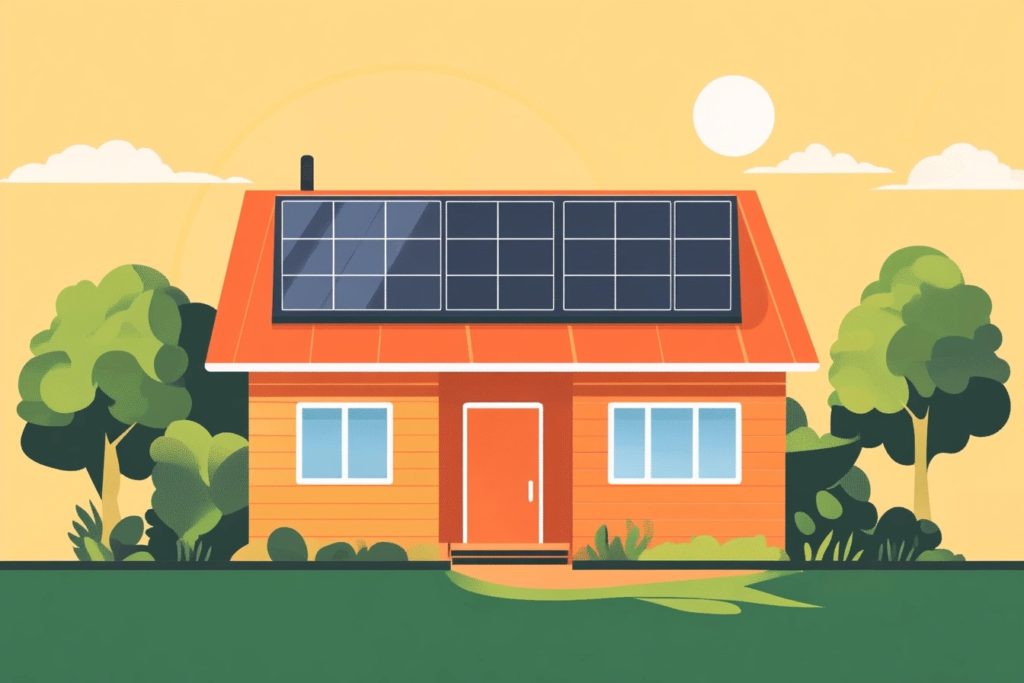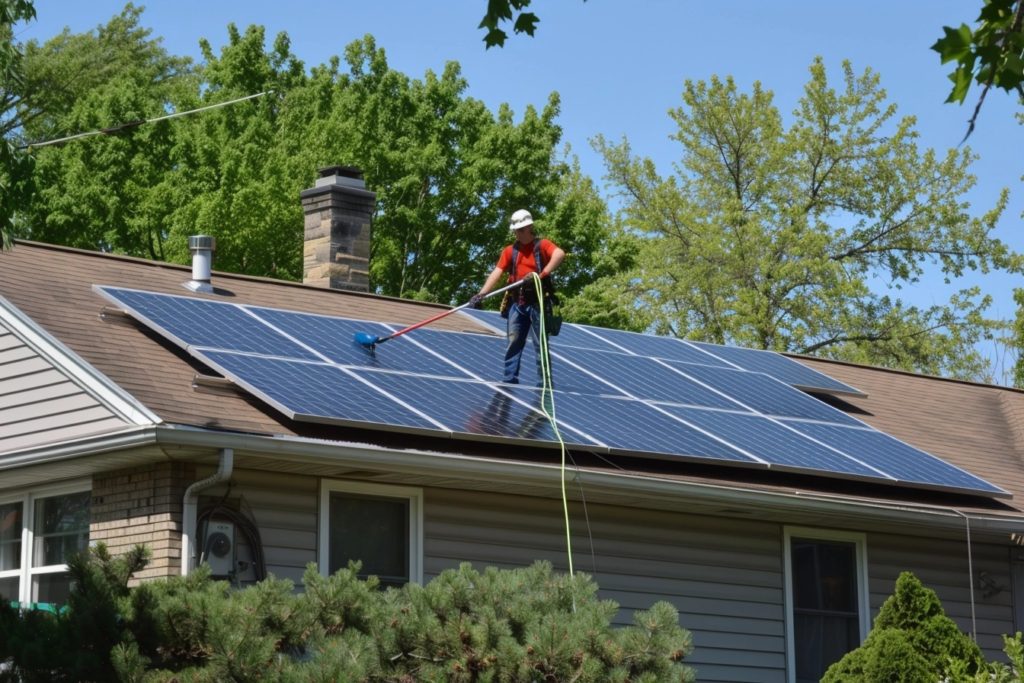
Installing a rooftop solar energy array for an existing home is a great way to save money and protect the environment. That said, energy-efficient home designs can help minimize how much electricity the home needs while integrating efficient appliances, insulation, lighting, HVAC systems, windows, doors, and more!
We’re huge fans of passive solar home designs and other forms of energy-efficient new-home construction projects, as they can maximize a solar energy system’s output by integrating solar features throughout the home. Let’s discuss the various aspects of solar energy design for home construction and renovation. How can these passive solar home design plans save you money while generating eco-friendly energy?
Home Energy Assessments
Home energy assessments are a great way to analyze an existing home’s potential for energy efficiency. If you’re considering installing a rooftop solar energy array, you should first perform a home energy assessment. While you can DIY this assessment, we always prefer hiring a professional.
In your home energy assessment, your chosen assessor will examine each room in your home, using tools like infrared cameras, smoke pens, moisture meters, blower doors, gas leak detectors, and carbon monoxide detectors to identify any “soft spots” in its energy efficiency. Identifying these problem areas can help you make energy-saving renovations to your home.
Smart Design for Energy-Efficient Homes
For new construction, energy efficiency begins with smart design. When planning and integrating solar energy design for home construction, everyone needs to be on the same page. This means that the architects, builders, construction crew, and homebuyers all need to understand their role in creating an energy-efficient home.
Regular communication between all parties is vital when implementing energy-efficient home designs. For instance, if your architect changes their plans, they need to immediately inform the homeowner, builder, and subcontractors to ensure that everyone knows their roles and responsibilities at all times.
What Are Passive Solar Home Designs and How Do They Work?
Passive solar home design plans have become increasingly popular over the years. The most basic definition of passive solar is that, as the home soaks up direct sunlight through south-facing windows, various elements of the home trap and retain that heat, significantly reducing the amount of energy required to heat the home. There are four key elements of passive solar home designs that we will briefly outline before moving on.
Window Orientation
The most important element of passive solar home designs is window orientation. You should integrate as many south-facing windows as possible in the design, and you should ensure that these windows are not shaded during peak sunlight hours. However, it’s also important to install shades and curtains that can block out as much of this sunlight as possible in the summer, when heat becomes an efficient home’s enemy rather than its friend.
Thermal Mass Materials
Passive solar home design plans also include materials that can store heat. In the winter, these materials can trap heat from sunlight within the home, while in the summer, they can cool the air by absorbing heat. Structural materials that have strong thermal mass ratings include concrete, stone, and brick, while decorative elements like tiling and even landscaping can also have an impact.
Distribution Mechanisms
The next aspect is to include elements into the energy-efficient home designs that can spread the solar heat around the house. The means to distribute this heat are conduction, convection, and radiation. Conduction refers to heat transfer between two items that touch each other, while convection is the transfer of heat through liquid or air.
Finally, radiation is the distribution of heat from a nearby source. It’s important for your home’s architect to incorporate elements for all three types of heat distribution in order to achieve success with your passive solar home design plans.
Control Elements
Control elements are the other vital aspect of passive solar home designs. This term refers to things like roof overhangs and awnings for shade in the summer, differential thermostats to control airflow throughout the home, and various elements like vents, dampers, shutters, blinds, and more.
What Is an Ultra-Efficient Home?
The pinnacle of energy-efficient home designs is the ultra-efficient home. This type of home incorporates efficient construction materials and home appliances with a renewable energy system like a rooftop solar array. An ultra-efficient home can even include energy-efficient landscaping and air-tight structural elements. The ultimate in ultra-efficient homes is the Passive House, a certification given only to homes that pass the Passive House Alliance’s stringent requirements for passive solar home designs.
Direct Gain vs. Indirect Gain vs. Isolated Gain
There are three different types of strategies for implementation of passive solar home design plans: direct gain, indirect gain, and isolated gain. Direct gain refers to the living space itself and includes elements like south-facing windows, floors and walls made with masonry, water elements to store heat, and more.
Meanwhile, indirect gain refers to the thermal mass that exists in between the sun’s rays and the home’s living space. A good example of indirect gain is a Trombe wall, a masonry wall usually about a foot thick that sits directly behind the home’s south-facing windows. When the sun’s rays pass through the windows, their energy is absorbed by the Trombe wall and radiated into the home.
Finally, isolated gain is the process of absorbing solar radiation to generate heat. Isolated gain involves a collector mechanism to absorb the radiation, a storage element, and a distribution mechanism.
Other Elements of Energy-Efficient Home Designs
There are other factors in solar energy design for home applications, such as sunrooms made of glass to refract and absorb heat. In addition, energy-efficient window coverings (like blackout curtains or external shutters) can make any home far more efficient in the hot summer months.
If you need any assistance or advice throughout the passive solar home design process, you can reach out to LGCY Power. Our experienced representatives and reputable local solar installers can help turn your energy-efficient home designs into the passive solar home of your dreams!




